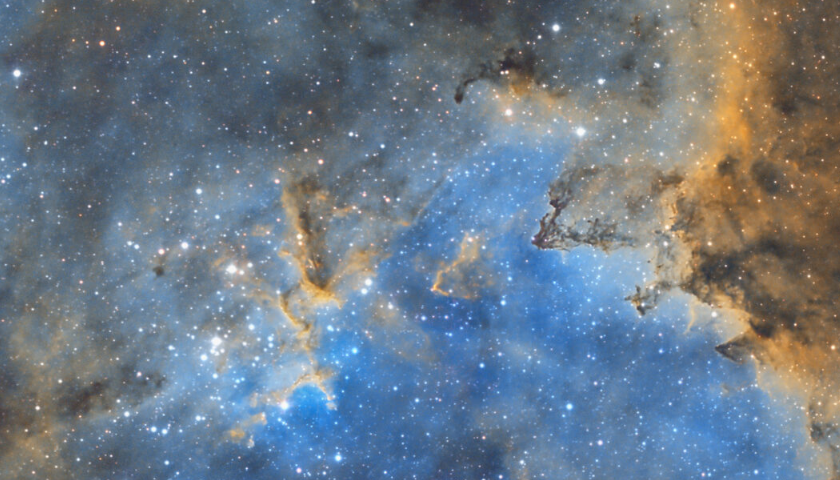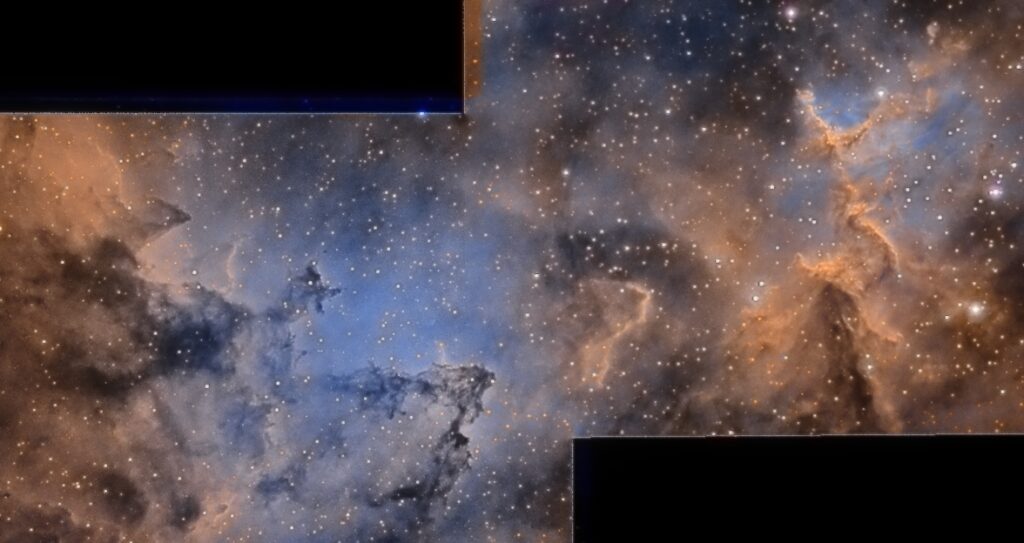In the central regions of the IC 1805 emission nebula, cosmic clouds seem to draw fantastic figures. The clouds are sculpted by stellar winds and radiation from the massive, hot stars in Melotte 15, the nebula’s newborn star cluster.
The stars of the cluster, about 1.5 million years old, are located near the center of this celestial landscape, along with clouds of dark dust that are seen in silhouette.

Dominated by the emission of atomic hydrogen, the telescopic view spans about 30 light-years. Wider field images reveal a simpler form of IC 1805 that suggests the popular name of the Heart Nebula.
IC 1805 is located north of the Milky Way, about 7,500 light-years away in the constellation Cassiopeia.

Technical data:
Telescope: S/C 8″
CCD:Atik314L+
Focal Length Reducer: Meade 6.3
Filters: Ha 12nm/O[III] 12nm/S[II] 12nm
Telescope Guide: SkyWatcher ED80
Mount: LX200 GPSR
Guide CCCD: QHY5
CCD Temp:-25º
Ambient Temp:0º
Location: Anunaki Observatory / Rivas Vaciamadrid (Madrid)
Melotte 15 is an open cluster in the center of the Heart Nebula. It contains several stars of spectral type O that are responsible for ionizing the hydrogen of the nebula and making it shine with reddish light, among which it is worth highlighting HD 15629, and especially HD 15570, considered one of the most massive and luminous stars in the galaxy, with a luminosity of almost 3 million times that of the Sun and possibly more than 100 times more massive than it and HD 15558 , a massive binary system made up of two stars of 150 and 50 solar masses, which could even be triple. The nebula is made up of ionized hydrogen plasma.

